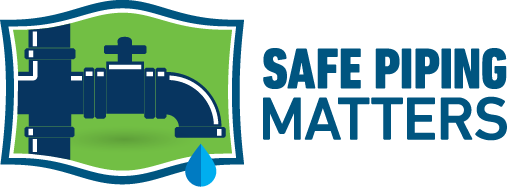EPA Targets Toxic Chemical in PVC Pipes

The U.S. Environmental Protection Agency (EPA) has issued a ruling targeting diisononyl phthalate (DINP), a chemical widely used as a plasticizer in products like polyvinyl chloride (PVC) pipes. This decision should change how materials used in plumbing systems are regulated, with significant implications for health, environmental safety, and construction practices.
DINP is primarily used to enhance flexibility and durability in PVC products. However, growing evidence shows that it poses serious health risks, particularly as it leaches into water supplies. According to the EPA’s strategy to prevent plastic pollution, PVC pipes are a substantial contributor to microplastic and chemical contamination in drinking water systems, exacerbating environmental and human health hazards.
Leaching and Environmental Risks
DINP migrates out of PVC pipes into surrounding environments, particularly when exposed to heat, mechanical stress, or water flow. A study from Environmental Science & Engineering Magazine identified PVC as a material that frequently releases hazardous substances, including phthalates. While PVC pipes used for potable water distribution should never contain DINP to comply with NSF/ANSI 61 standards, those used in drain, waste, and vent (DWV) systems or irrigation systems can still introduce DINP into the environment as it leaches from pipes into soil and water. This underscores the need for greater vigilance in material selection to mitigate risks both inside and outside buildings.
Health Implications
The health impacts of DINP are particularly alarming. According to a study published in Bioresource Technology, phthalates like DINP are linked to reproductive toxicity, hormone disruption, and developmental delays. As DINP leaches into drinking water, exposure risks increase, especially in vulnerable populations such as children and pregnant women.
The EPA has regulated benzene in drinking water to 5 parts-per-billion due to its carcinogenic properties, and similar scrutiny should apply to DINP and other harmful leachates. California’s Proposition 65 list has long classified DINP as a reproductive toxicant, which reinforces its potential risks in public health.
Industry Implications
The implications for plastic building materials could be profound. So it is unsurprising that defenders of plastic manufacturers, including lawyers and associations such as the American Chemistry Council who represent plastic interests, have pushed back against the EPA’s findings. They argue that risks don’t reflect real-world scenarios and existing studies are outdated. They further contend that the agency’s rulings do not sufficiently account for the economic and operational impacts of restricting DINP.
Advocacy and health groups who study chemical impacts on health say that lack of data does not equate to safety. They urge application of the Precautionary Principle to chemicals like DINP that pose serious health risks. This principle shifts the burden of proof to manufacturers, requiring them to demonstrate safety rather than placing the responsibility on communities and regulators to prove harm. According to a PlastChem “State of the Science” report, chemicals in plastics often lack sufficient hazard and exposure data, making it challenging to evaluate their long-term effects comprehensively. If policymakers applied the Precautionary Principle, they could phase out such chemicals before complete evidence of harm emerges, ensuring that chemicals like DINP do not cause irreversible damage and helping promote adoption of safer materials.
